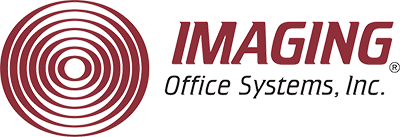Content is an extremely important asset for K-12 school systems throughout the country, but any content management system worthy of being implemented in such a complex operating environment must be easy to use and flexible while providing the required level of data security. In this post, we’ll discuss the top five questions you should be asking when considering content management and process automation solutions for a K-12 school system.
Full disclosure: these five questions have emerged organically throughout our consultations with current K-12 clients…and they’ve also been coming out as we develop our own homegrown, cloud-based content management tool-set, which we’ll be rolling out in 2020. It will be a confluence of all the best content management and process automation features we’ve observed over the years and all the “wish-we-had” features that clients—especially K-12 clients—have wanted, but have been unable to find in current off-the-shelf offerings.
1. If You Have an SIS System, Do You Have Integrated Process Automation?
If you already have an SIS system in place for managing the grades of students and employee records, integrating a cloud-based process automation tool like FileBound will help you to disseminate data more effectively across teams located in different places. For example, maybe you have a situation in which a student in another building needs information from records stored within your SIS. An integrated content management solution will allow you to quickly source the data and then respond to the request promptly without having to manually search through records.
2. Are You Still Processing Forms Using People and Paper?
Unfortunately, many schools are still using systems that rely heavily on people and paper rather than technology. They make the mistake of believing that paper copies of documents are more secure than digital copies and that people can be trusted to provide the data required faster and more effectively than software. However, these are extremely flawed assumptions.
Modern cloud-based digital forms can collect data from across a school system and automatically combine it within an easy-to-use single hub, where the data can be quickly located and validated. With digital forms, school teams across different locations can work together on the same projects, adding notes where required and ensuring that data is accurate up-to-the-minute.
 3. Are You Storing Paper-Based Records?
3. Are You Storing Paper-Based Records?
Schools often keep paper files in locked storage units. They’ve used this form of records retention for decades. Many school administrators actually maintain that this method is more affordable than using a software solution for the storage and management of student records. While this might be true in the short term, the long-term costs of paper-based storage are higher. Consider: you have to pay for the hours your administration team takes to find the information they need. You also have to pay to store the paper copies, whether in rented space or in wasted office square footage—not to mention the inherent security risks of paper-based records. Over time, paper-based record keeping will cost schools thousands of dollars more while subjecting records to entirely unnecessary risks, compared to digital content management solutions.
4. Is Onboarding For Certified and Non-Certified Staff an Ongoing Concern for HR?
Staff onboarding can take more time than is necessary when such processes are not formally documented and available in digital form. Security and organizational continuity are also big concerns. For example, with cloud-based content management technology, you’ll know immediately when documents have been altered and by whom. A cloud-based content management system also ensures onboarding and training materials will be modified by only qualified employees. It will also give new hires the tools and access they need to work more efficiently for your organization.
5. Does the Business Office Still Track Expenses Using a Paper Workflow?
Many business offices still use paper to track expenses. Sure, when calculators were the most powerful technology available, it was the easiest way to do it. Now, process automation solutions, such as FileBound, can monitor, maintain, and track expenses automatically. In addition, it can provide stakeholders tools to analyze individual spending activity and compare it with previous periods. Such information can prove extremely useful for controlling costs and mitigating over-spending on non-essential items.
 We Provide K-12 School Systems With the Tools They Need to Manage Operations More Efficiently
We Provide K-12 School Systems With the Tools They Need to Manage Operations More Efficiently
Working with a qualified content management and process automation technology expert (like Imaging Office Systems) can help ensure your company has access to the tools required to efficiently manage operations over the long term. Our team has decades of experience in this industry, and we can help address the challenges your school system faces with state-of-the-art content management and process automation solutions. To explore the full range of options available to you, call Imaging Office Systems today.
